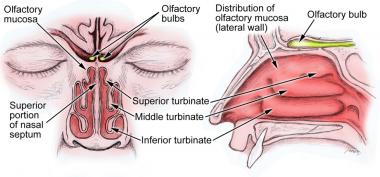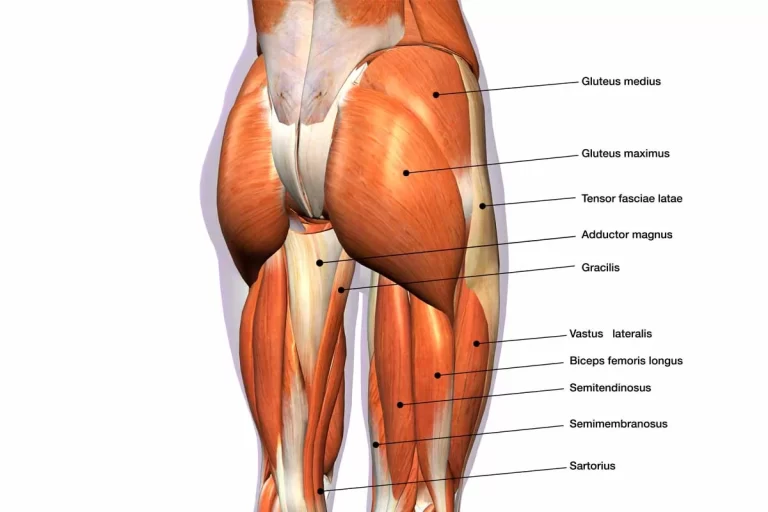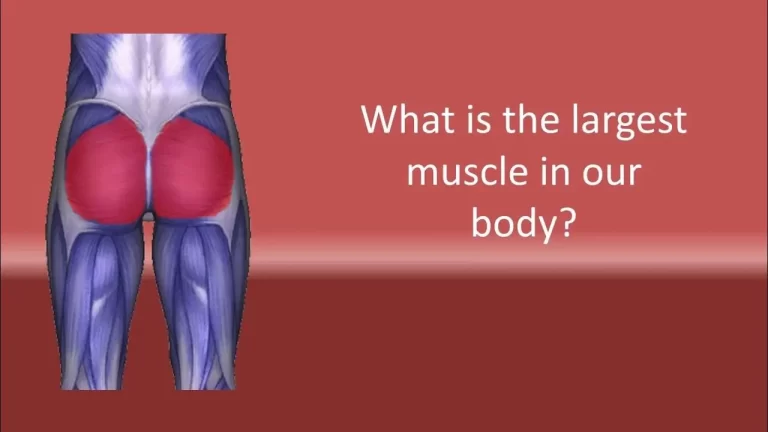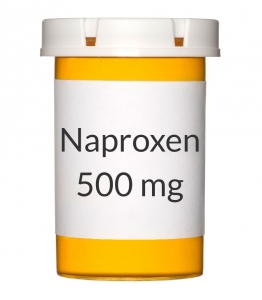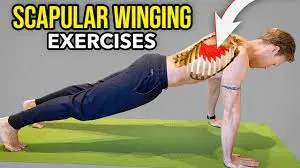Neural pathway and spinal cord tract
Introduction
The central nervous system (CNS) accommodates numerous nerve fibers that group together to form pathways between its different parts. These neural pathways show the communicating highways of the CNS. They can be located uniquely within the brain, giving connections between several of its structures, or they can link or connection between the brain and the spinal cord together.
Neural pathways that connect or linked the brain and the spinal cord are called the ascending and descending tracts. They are responsible for conducting sensory and motor information to and from the periphery. For example; this is how sensation from the fingertips reaches to the brain and how conscious and reflexive actions return to the fingers.
What are neural pathways and tracts?
A neural pathway is a bundle of axons that connects two or more various neurons, facilitating communication between them. Tracts are neural pathways that are situated in the brain and spinal cord (central nervous system). Each tract travels or runs bilaterally; one on each side of the cerebral hemisphere or in a hemisection of the spinal cord region. Some of the tracts intersecting or crossover, to descend (downward) or ascend (upward) on the contralateral side. The level of intersection varies in each tract. The nomenclature is a bit diverse, resulting in pathways being called ‘lemnisci’, ‘peduncles’, ‘fasciculi’, or ‘tracts’, depending on their course, location, and projection.
Tracts are formed by neurons synapsing with one another, and these neurons can be classified as first-order, second-order, and third-order neurons depending on their location or region and order within the tract. moreover, tracts are named in accordance with origin (first half of the term) and termination (remaining part). For example, the spinothalamic tract begins in the spinal cord and terminates in the thalamus, while the corticospinal tract starts in the cerebral cortex and terminates in the spinal cord.
Spinal cord tracts
Ascending tracts
The spinal cord is giving ascending and descending tracts. The ascending tracts are sensory pathways that travel via the white matter of the spinal cord and conduct somatosensory information up to the brain. They allow you to feel sensations from the external environment (exteroceptive) for eg: touch, temperature, and pain, as well as proprioceptive information from the muscles and joints.
The sensory pathways begin from receptors situated in our skin, organs, muscles, etc. These specialized sensory organs register physical and chemical changes in the body’s external and internal environment and convert these changes into electrical impulses. This afferent (periphery to CNS) information then runs from these receptors, through peripheral nerves, to the CNS, where they connect with the relevant ascending tract.
Each ascending pathway follows the same general structure as 1st-order, 2nd-order, and 3rd-order neurons. 1st-order neurons are afferent in nature. The sensory input from the receptors is sent via the peripheral nerve to the spinal/dorsal root ganglion. The body of the first-order neuron, within the ganglia, projects its axons to the posterior or behind the gray horn of the spinal cord. Here, it synapses with 2nd order neurons that ascend along with the spinal cord and project onto 3rd order neurons which are present in the subcortical structures of the brain, such as the thalamus. These 3rd-order neurons pick up the neural impulse and conduct it onto the cerebral cortex.
There are 10 ascending tracts: posterior/dorsal column (fasciculus gracilis, fasciculus cuneatus), spinothalamic (anterior, lateral), spinocerebellar (anterior, posterior, Cuneo-), spinotectal, spinoreticular and spinoolivary.
Posterior/Dorsal column pathways.
The gracile and cuneate fasciculi, also known as the dorsal/posterior columns, are two ascending pathways situated side-by-side in the posterior funiculus of the spinal cord region. They conduct fine and discriminating touch as well as proprioceptive sensations. jointly with the medial longitudinal fasciculus, these tracts form the ‘dorsal column medial lemniscus pathway’ (DCML pathway), also known as the ‘posterior column medial lemniscus pathway’ (PCML pathway).
First-order neurons ascend ipsilaterally (on the same side) via the spinal cord. They synapse in the gracile and cuneate nuclei of the medulla oblongata, where the body of the 2nd-order neuron lies. The axons of the 2nd-order neuron instantly intersect (cross the midline) and ascend superiorly. At this point, the posterior column pathway is denoted as the medial lemniscus, and the fibers continue to ascend until the thalamus. After synapsing in the thalamus, 3rd-order neurons pass via the posterior one-3rd of the posterior arm of the internal capsule and predict to the primary somatosensory cortex where the sensations are plotted out and the origin pinpointed.
Spinothalamic tracts
There are 2 spinothalamic tracts: anterior and lateral. The anterior spinothalamic tract conveys course touch and pressure sensation. It is situated in the anterior funiculus of the spinal cord. The lateral spinothalamic tract conduct pain and temperature sensations. It is present in the lateral funiculus of the spinal cord.
The anterior spinothalamic tract starts with peripheral 1st-order neurons situated in the spinal ganglion. Axons of the 1st order neurons reach the posterior gray horn of the spinal cord via the posterior root of the spinal nerve. Fibers from the posterior grey horn (second-order neurons) ascend within the ipsilateral anterior funiculus for 7 segments of the spinal cord, intersecting and then running onto the thalamus. Finally, 3rd order neurons predict from the thalamus onto the primary somatosensory cortex.
The lateral spinothalamic tract travels in the lateral funiculus of the spinal cord and conducts the sensations of pain and temperature. Similar to its anterior sibling, 1st-order neurons situated in the spinal ganglion send axons to the posterior gray horn, particularly in the Rexed laminae regions I, IV, V, and VI, where they synapse with 2nd order neurons. These intersect across the anterior white commissure and ascend in the (now contralateral) lateral spinothalamic tract. While crossing the medulla, these fibers join with those from the anterior spinothalamic and spinotectal tracts to make the anterolateral tract (spinal lemniscus). The second-order neurons of the lateral spinothalamic tract synapse in the thalamus and the next 3rd order neurons, together with the anterior spinothalamic tract, cross via the posterior third of the posterior arm of the internal capsule. These neurons then predict onto the primary somatosensory cortex, where the information about external stimuli is decoded and examined.
Spinocerebellar tracts
Spinocerebellar tracts sense (feel) proprioception from the muscle spindles, Golgi tendon organs, and also from joint receptors. As a result, they are implicated in movement coordination and posture sustentation. There are 2 main spinocerebellar tracts that conduct information from the lower extremities; the posterior (dorsal) spinocerebellar and the (anterior) ventral spinocerebellar tracts. Whilst the cuneocerebellar and rostral spinocerebellar tracts conduct information from the upper extremities.
The dorsal or posterior spinocerebellar tract (a.k.a. Flechsig’s fasciculus) in particular for the lower limbs. The fibers get originate from the posterior grey horn, run posterolaterally via the white matter without intersecting, and predict onto the cerebellar cortex by passing via the inferior cerebellar peduncle. Functionally, the posterior spinocerebellar tract passes the sensory information from the muscle spindles, and Golgi tendon organs, as well as from touch and pressure receptors of the lower extremities or lower limbs.
The anterior(ventral) spinocerebellar tract (a.k.a. Gowers fasciculus) also conducts sensory information from the lower limb. However, while the posterior spinocerebellar tract passes information about the muscle tone of synergistic muscles, strength, and speed of movement from the lower extremities, the anterior spinocerebellar tract appears to pass information related to their status (posture) during their movement. The organization of the anterior spinocerebellar tract is more complicated or complex than the posterior, because of its numerous polysynaptic inputs and large receptive fields. The 1st order neuron is situated in the spinal ganglion. Its axon reaches the posterior horn via the posterior root and synapses with the 2nd-order neurons. Their fibers immediately cross at the same level of the spinal cord via anterior commissural fibers and ascend contralaterally (opposite side)along with the anterolateral funiculus. The majority of fibers from the 2nd order neurons reach the contralateral cerebellum by passing via the superior cerebellar peduncle and medullary velum. The fibers then cross over again, ending up in the ipsilateral (on the same side of the body) cerebellar cortex. Therefore, the anterior spinocerebellar tract intersects(crosses) twice, before synapsing in the vermal and paravermal regions of the cerebellum called the spinocerebellum.
The cuneocerebellar and rostral spinocerebellar tracts are the upper extremity or upper trunk homologs of the posterior/dorsal and the anterior/ventral spinocerebellar tracts, individually (severally). They conduct proprioceptive information from the upper limbs and neck(upper trunk). Note that the “Cuneo-” obtain from the accessory cuneate nucleus, not the cuneate nucleus. These two nuclei are related or connected in space, but not in function
Spinotectal tract
Superior colliculus
The spinotectal tract (also known as the spinomesencephalic tract) is responsible for spinovisual reflexes, allowing or permitting us to turn the head and gaze or stare toward a visual stimulus (e.g., a sudden flash of light). The fibers cross the spinal cord to run or travel in the anterolateral white column. They ultimately or eventually predict the superior colliculus, part of the tectum of the midbrain (mesencephalon).
Spinoreticular tract
The spinoreticular tract is involved in or taking part in influencing levels of consciousness and gives a pathway from the muscles, joints, and also from the skin to the reticular formation of the brainstem.
The axons of the 1st order neurons are present within the spinal ganglion. They enter the spinal cord from the posterior root ganglion and synapse with 2nd order neurons in the posterior horn of the gray matter. The axons from these neurons ascend the spinal cord in the lateral white column, mixing or merging with the lateral spinothalamic tract. Most of the fibers are uncrossed (not crossed) and synapse with neurons of the reticular formation in the medulla oblongata, pons, and midbrain region.
Spino-olivary tract
The spino-olivary tract (a.k.a. Helweg’s fasciculus) also transmits (passes) cutaneous and proprioceptive information to the cerebellum. Similar to other ascending pathways, the first-order neurons are situated in the spinal ganglion. They synapse with 2nd-order neurons in the posterior gray column. The axons of the 2nd order neurons cross the midline as they enter the spinal cord and ascend within the contralateral anterior funiculus to reach or to get the accessory olivary nucleus. After synapsing with 3rd order neurons in the inferior olivary nuclei in the medulla oblongata, the axons cross the midline again and enter the cerebellum via the inferior cerebellar peduncle.
The inferior olivary nucleus is the origin or source of climbing fibers to Purkinje cells in the cerebellar cortex. Thus, the spine-olivary tract may play an important role in the control of movements of the (trunk) body and limbs.
Descending tracts
These motor pathways travel via the white matter of the spinal cord conducting information from the brain to peripheral glands or muscles skeletal muscles. The descending tracts are involved in voluntary motion, involuntary motion, reflexes, and regulation or management of muscle tone.
The general or common structure of descending tracts is similar to the ascending tracts but in reverse. 1st-order neurons travel from the cerebral cortex or brainstem and synapse in the anterior gray horn of the spinal cord. Very short 2ne order neurons, called interneurons, convey the impulse to 3rd-order neurons which are also situated in the anterior grey horn at the same spinal cord level.
Because the 2nd-order neurons are negligible we use only a 2-order system for the descending (motor) tracts. This way, the 1st neuron in the pathway (the upper motor neuron) get arises in the cerebral cortex or brainstem, descends along with the spinal cord, and synapses in the anterior gray horn. The 2nd neuron in the pathway (lower motor neuron) leaves the spinal cord via the anterior(ventral) root. In the cervical, brachial, and lumbosacral area, the anterior roots combine or merge to form the so-called nerve plexuses. Peripheral nerves emerge or appear from the distal aspect of these plexus, or in the case of the thoracic region directly from the anterior roots. These efferent neurons subsequently or later travel all the way to a specific skeletal muscle or muscle group (myotome), supplying them.
The descending tracts are named as corticospinal, corticobulbar (or corticonuclear), reticulospinal, tectospinal, rubrospinal, and vestibulospinal. The corticospinal and corticobulbar tracts form the pyramidal tract, which is under (receive))voluntary control. The remaining orf leftover tracts are grouped together into the extrapyramidal system, which is under (receive) involuntary control.
Corticospinal tract
The corticospinal tract is involved with the speed and agility or flexibility (coordination) of voluntary movements. The tract gets originates mainly from the primary motor cortex of the precentral gyrus (Brodmann area 4) and comprises only two neurons rather than fairly than three. The 1st order or upper motor neurons (UMN) descend until the medulla oblongata, where ~90% of them intersect forming the lateral corticospinal tracts. The un-intersecting neurons run ipsilaterally(same side) as the anterior corticospinal tracts. These intersect further down the spinal cord, below or under the level of the medulla oblongata.
The descending fibers of the anterior tracts run via the anterior funiculus of the spinal cord, while those of the lateral tracts run via the lateral funiculus. The fibers continue till the anterior grey horn, where they synapse with the 2nd order or lower motor neurons (LMN). The latter predicts peripheral effector (skeletal) muscles, resulting in movement.
The corticospinal tract collects or received its alternative name, pyramidal tract because it forms a pyramid while passing via the medulla oblongata.
Corticobulbar tract
The corticobulbar tract also called the corticonuclear tract, the corticobulbar tract influences the activity of the motor nuclei of both motor (oculomotor, trochlear, abducens, accessory, hypoglossal) and mixed or assorted (trigeminal, facial, glossopharyngeal, vagus) cranial nerves. via these cranial nerves, this tract controls the activity or m movements of muscles of the head, face, and neck. The corticobulbar tract connects the brain with the medulla oblongata, also referred to as the bulbous region. Like the corticospinal tract, this tract also comprises only 2 neurons; UMNs (upper motor neurons) travel from the primary motor cortex, frontal eye fields, and somatosensory cortex all the way to LMNs (lower motor neurons) situated or present in the brainstem. The LMNs (lower motor neurons) are constituted by the cranial nerve nuclei. The corticobulbar tract is also a segment of the pyramidal tract.
Reticulospinal tract
While various tracts, such as corticospinal, and corticonuclear, are involved in motor functions, they must be regulated or managed in order to be useful. This is the role or function of the extrapyramidal system.
The reticulospinal tract, which is part of this involuntary system, helps with motor regulation or management by facilitating or inhibiting (slowing down or obstructing) voluntary and reflex actions. To put it in context, this tract helps maintain posture by inhibiting (slowing down or obstructing) the flexors and augmenting or increasing impulses to extensors in order for us to stand upright.
The uncrossed fibers of the reticulospinal tract get originate from the reticular formation spanning the brainstem. They descend as the medial (pontine) and lateral (medullary) reticulospinal tracts via the anterior and lateral funiculi of the spinal cord white matter, respectively. These fibers synapse onto neurons in the anterior grey horns, in the anteromedial region of laminae VII and VIII, where they affect motor neurons supplying paravertebral and limb extensor musculature.
In addition to its role of facilitating or inhibiting (slowing down or obstructing) voluntary and reflex actions, the reticulospinal tract is also involved in breathing, it mediates or interferes with the pressors and depressors of the circulatory system and, in co-occurrence with the lateral vestibulospinal tract, helps in maintaining balance and making postural adjustments. Muscle tone, balance maintenance, and postural alteration form a necessary background upon which voluntary movement is carried out which explains why these pathways have numerous synapses with the lower motor neurons(LMN).
Tectospinal tract
The tectospinal tract is capable of moving the head swiftly toward the source of sudden auditory or visual stimuli. Fibers of the tectospinal tract get originate in the superior colliculus, which receives or collects information from the retina and cortical visual (connection) association areas. These fibers then predict to the contralateral (decussating posterior to the mesencephalic duct) and ipsilateral(same side) portion or area of the first cervical neuromeres of the spinal cord and to the cranial nerves manage or responsible for eye movement (CN III, IV, and VI), situated in the brainstem. The tectospinal tract then continues to descend in the anterior funiculus of the spinal cord till it reaches the neurons within cervical laminae VI-VIII where the fibers synapse with lower motor neurons of the muscles of the neck regions.
The tectospinal tract is responsible for controlling or supervising the movement of the head in response to auditory and visual stimuli. Therefore, it has been presumed this tract is responsible for the head position and movement depending on visual input received or collected by the superior colliculus.
Rubrospinal tract
The rubrospinal tract get originates from the red nucleus situated in the midbrain tegmentum. Its axons cross the midline and descend via the pons and medulla oblongata to get enter the lateral funiculus of the spinal cord. The fibers terminate or end by synapsing with internuncial neurons in the anterior gray column at the level or region of laminae V, VI, and VII, where it influences or impacts the lower motor neurons of the upper limbs.
The rubrospinal tract is considered or examined to be responsible for the mediation or intervention of fine involuntary movement, along with other extrapyramidal tracts, including the vestibulospinal, tectospinal, and reticulospinal tracts. In other words, it coordinates (coefficient) the flexion/extension of muscle groups in order to execute(carry out) large amplitude movements.
In humans, the rubrospinal tract is very small and its clinical importance is uncertain or unknown. It may participate in taking over (gain) motor functions after pyramidal (corticospinal) tract injury or lesion.
Pathways in the brain
There are many individual or isolated pathways within the brain the limbic system and basal ganglia. Let’s examine them very shortly.
Limbic system
The limbic system is situated at the boundary between the cerebral cortex and the hypothalamus. It is involved or takes part in emotions and behaviors, for the occurrence of hunger, satiety, sexual arousal, and even memory. As the limbic system is situated at the interface between the cortex and subcortex, its anatomical constituents are derived from both areas:
Cortical constituents: insula, hippocampus, cingulate gyrus, & parahippocampal gyrus, orbital frontal cortex
Subcortical components: amygdala, olfactory bulb, hypothalamus, anterior thalamic nuclei, and septal nuclei.
In order for the limbic system to perform or execute its function, it must behave or act as a unit. Therefore, all of the above constituents must continuously communicate with one another, a capability facilitated by the following neural structures: alveus, fimbria, fornix, mammillothalamic tract, and stria terminalis.
Basal ganglia
The basal ganglia or basal nuclei refers to a collection or receiving of grey matter masses present deep in the white matter of the cerebral hemispheres. There are four major nuclei in total: striatum, globus pallidus, subthalamic nucleus, and substantia nigra.
To carry out or accomplished their functions, the basal nuclei are connected by various pathways. Inputs are collected by the caudate nucleus and the putamen from the cerebral cortex, thalamus, subthalamus, and substantia nigra of the brainstem. These nuclei convey the information through direct and indirect pathways to the globus pallidus, which shows or represents the main output nucleus. The globus pallidus integrates (combines) the signals and sends them back to the cortex through the thalamus and other structures, according to the direct or indirect pathways. Therefore, the basal ganglia fundamentally form a regulatory loop that regulates (modifies) voluntary and involuntary movements.
FAQ
What are the 3 neural pathways?
In brief, a neural pathway is a sequence of connected neurons that convey signals from one part of the brain to another. Neurons come in three major types: sensory neurons that are stimulated by our senses; motor neurons that control muscles; and inter-neurons that connect neurons together.
What are the pathways of the spinal cord anatomy?
Spinal cord neural pathways are present within the spinal cord white matter. On either side, the white matter is split or divided into three funiculi: anterior, lateral, and posterior. Ascending tracts pass information from the peripheral region to the brain.
What is the spinal pathway?
Ascending Sensory Pathway
The spinal cord, generally or basically a highway for nerves streamlines sensory and motor signals to the brain and the body. The information exposed by sensory receptors in the peripheral region is conveyed along with the ascending neural tracts in the spinal cord
Why is the spinal cord referred to as the neural highway?
The spinal cord is the body’s statistics or informative superhighway. Protected(secured)) by the bony vertebral column, it is an integral part of the central nervous system (CNS). It continuously pulses electrochemical signals that conduct sensory and motor information or statistics between the brain and the body.
What is an example of a neural pathway?
A neural pathway connects one part (side) of the nervous system to another by using bundles of axons called tracts. The optic tract that expands or extends from the optic nerve is an example of a neural pathway because it connects the eye to the brain; additional pathways within the brain connect to the visual cortex.
How many neural pathways are in the body?
The human brain is made up of approximately 100 billion neurons manufacturing a total of 100 trillion neural connections. This is a lot of or enough neural power, right at our fingertips.
What is the order of the neural pathway?
There are three orders of neurons. The 1st order neurons conduct signals from the peripheral region to the spinal cord; the 2nd order neurons conduct signals from the spinal cord to the thalamus; and the 3rd order neurons conduct signals from the thalamus to the primary sensory cortex.
What are the 3 types of the spinal cord?
There are 4 sections of the spinal cord that influence the level of spinal cord injury or lesion: cervical, thoracic, lumbar, and sacral.
What is the 3 major portion of the spinal cord?
the spinal cord has 3 main parts:
Cervical (neck).
Thoracic (chest).
Lumbar (lower back).
What are the 2 major neural pathways in the spinal cord?
Pathways are either ascending (carrying information from peripheral receptors to the brain) or descending passing information from the brain to spinal cord neurons). Below, the portion of touch & kinesthesia ascending
track or pathway and a corticospinal descending pathway or track is arranged
How many neural pathways are in the brain?
If we have 100 billion neurons, and each neuron can make 250000 connections, that’s 100 billion times 250 000 possible connections or links, which is about 25 000 trillion or 25 quadrillions. There are a million more potential links or connections in the brain than stars in a milky way.
What is the main role or main function of the spinal cord?
The brain and spinal cord are the body’s central nervous system(CNS). The brain is the command center for the body, and the spinal cord is the track or pathway for messages sent by the brain to the body and from the body to the brain.

